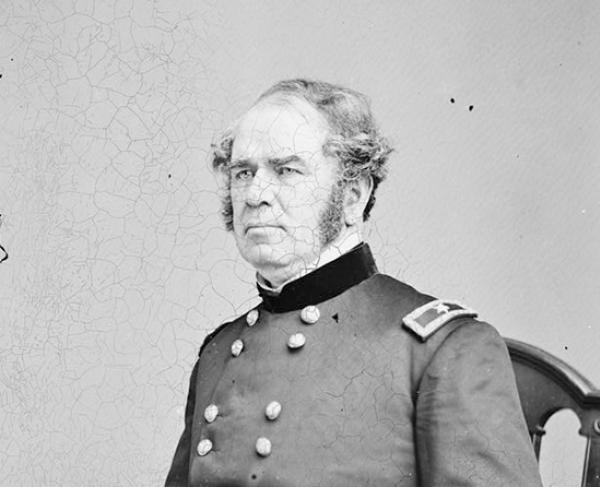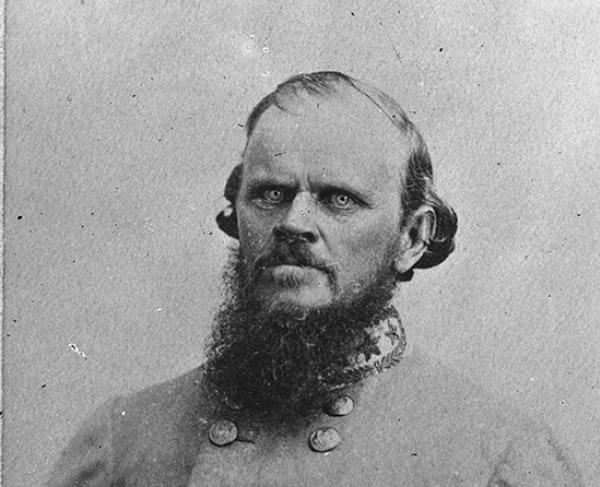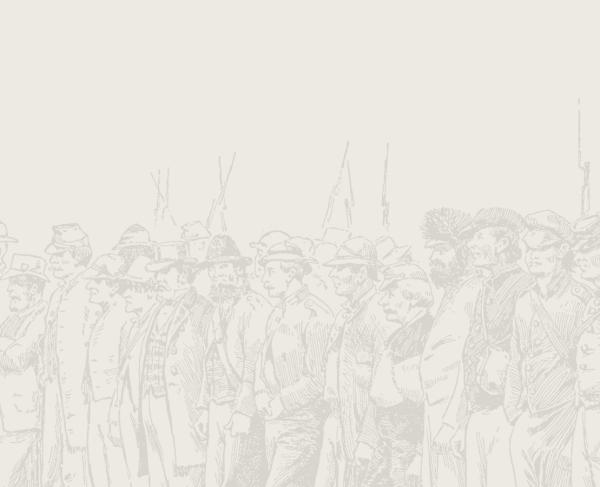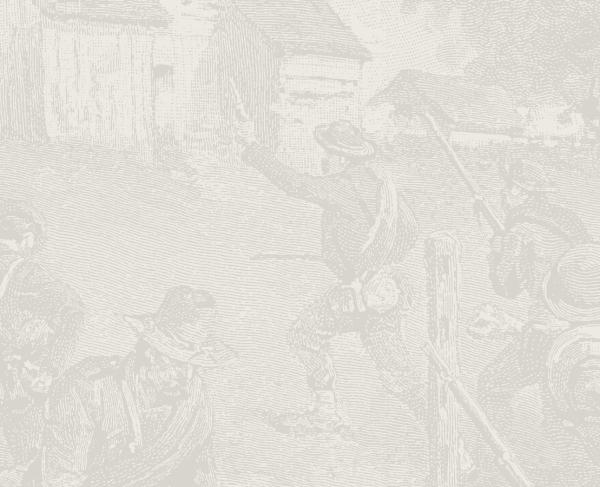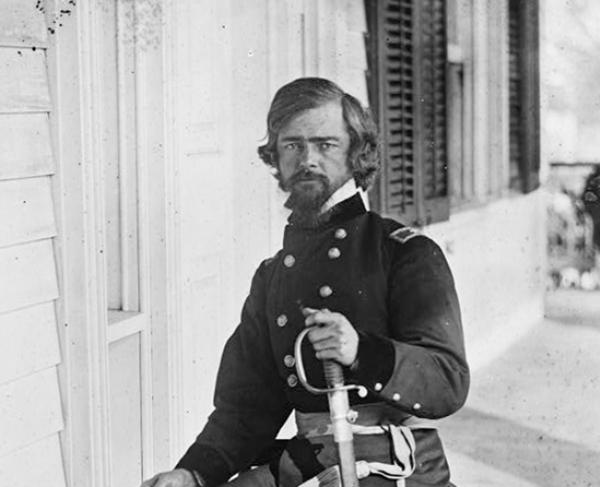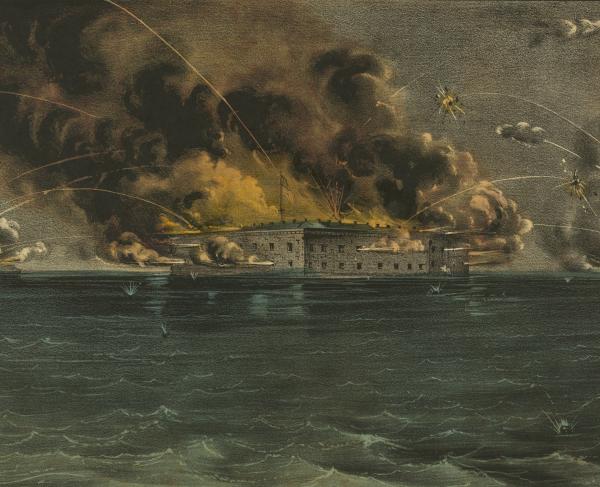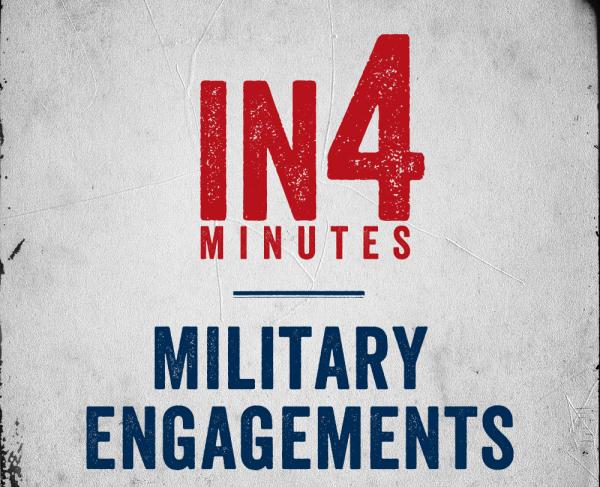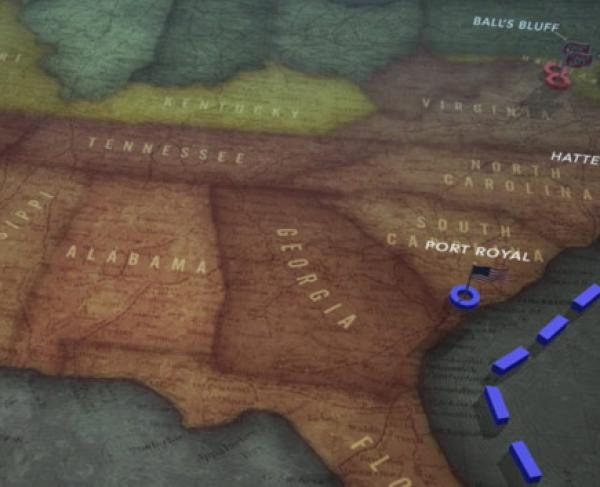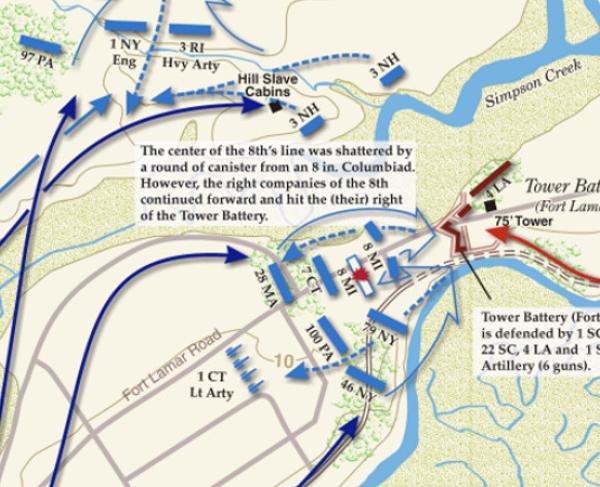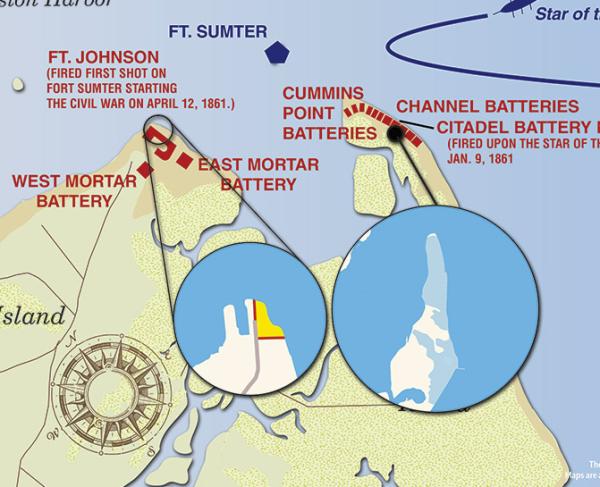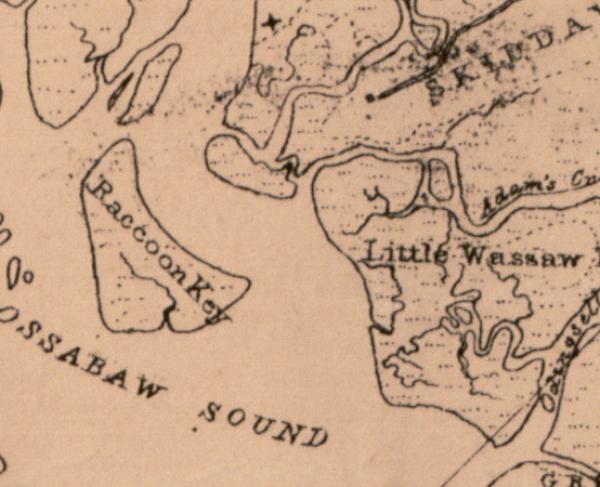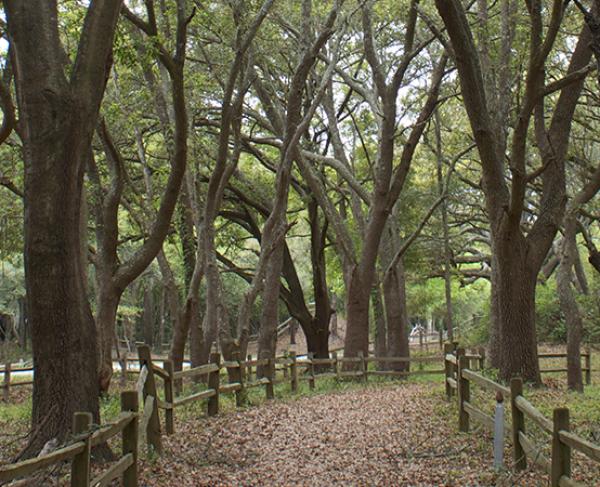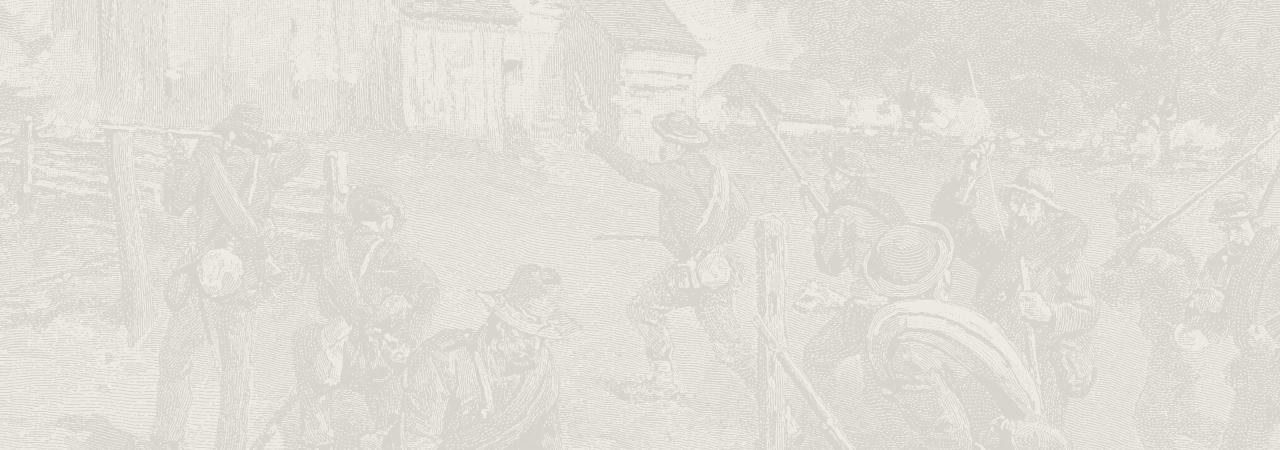
Secessionville
Ft. Lamar
City of Charleston, SC | Jun 16, 1862
In the summer of 1862, Union forces under the command of Union General Henry W. Benham attacked Confederate forces under General Nathan G. Evans at Secessionville, resulting in a Federal defeat.
How It Ended
Confederate Victory. After failing to take Fort Lamar, Benham decided to withdraw from the field and retreat to James Island. Once there, he was relieved of command.
In Context
In the summer of 1862, Federal forces under the command of Henry Benham landed two divisions on the southern end of James Island near Grimball’s landing. Benham’s goal was to capture the Confederate port at Charleston, South Carolina, via a land route.
On June 2, 1862, Federal forces under the command of Benham landed at Grimball’s Landing on James Island and quickly pushed away the Confederate forces in the area. However, on June 10th, Confederates under Colonel Johnson Hagood tried to drive the Federals from their positions but were defeated in the resulting action. After this, both sides prepared for the upcoming offensive, with the Federals gathering supplies and the Confederates preparing their defenses at Secessionville.
Early on June 16th, Federal forces under Benham moved out from their camp at Grimball’s Landing. Benham planned to send Issac Stevens’ division towards Fort Lamar, where he would attack the Confederate garrison. At the same time, Horatio G. Wright’s division moved towards the left, where his men would protect the Federal flank.
At around 4:30 a.m., Stevens’ division struck the Confederate lines at Fort Lamar, with the 8th Michigan Infantry hitting the Southern lines first. The terrain in front of the fort was horrific for the Union men., Elements of the Stevens division made their way into the fort, but the first attack was pushed back due to reinforcements arriving in the fort. Stevens’ men made another charge with the 79th New York Highlander regiment taking the lead. Like the 8th Michigan attack, the Highlanders made their way into the fort, but they were repulsed.
Despite Stevens’ failure to take Fort Lamar, Wright’s division finally made it to the battlefield on the Federal left flank. Once Wright’s men were in position they immediately assailed the Confederates but reinforcements compelled him to withdraw.
685
204
After both Stevens’ and Wright’s commands were forced from the field, Benham decided to withdraw back towards Grimball’s Landing. Since Benham failed to dislodge the Confederates from their position, he was dismissed by the overall federal commander along the coast, David Hunter. Later Union efforts to capture the city would focus on the outer forts defending the harbor. Nevertheless, the Confederate victory provided useful propaganda since it increased morale in Charleston and offset recent Southern losses.
After the Union failure of the Battle of Secessionville, Benham was relieved of command by David Hunter, his direct superior. After his dismissal, Benham faced a court martial for his disobedience in following Hunter’s orders which were not to attack the Confederate garrison. However, in January 1863, Benham’s court-martial ruled in his favor, with the military court deciding that the attack was justifiable. Nevertheless, the damage was done, and Benham would never hold an independent command again. Instead, for the rest of the war, he commanded the engineer brigade in the Army of the Potomac.
Col. Thomas G. Lamar was tasked with defending Fort Lamar, named after him, during the Battle of Secessionville. At first, his small garrison of 500 men faced off against over 6,000 Union troops. However, under his leadership, the Confederates held the fort long enough for reinforcements to arrive and push back the Federal command. Lamar was dubbed “The Hero of Secessionville” for his role in the battle.
Secessionville: Featured Resources
Related Battles
6,600
2,000
685
204
